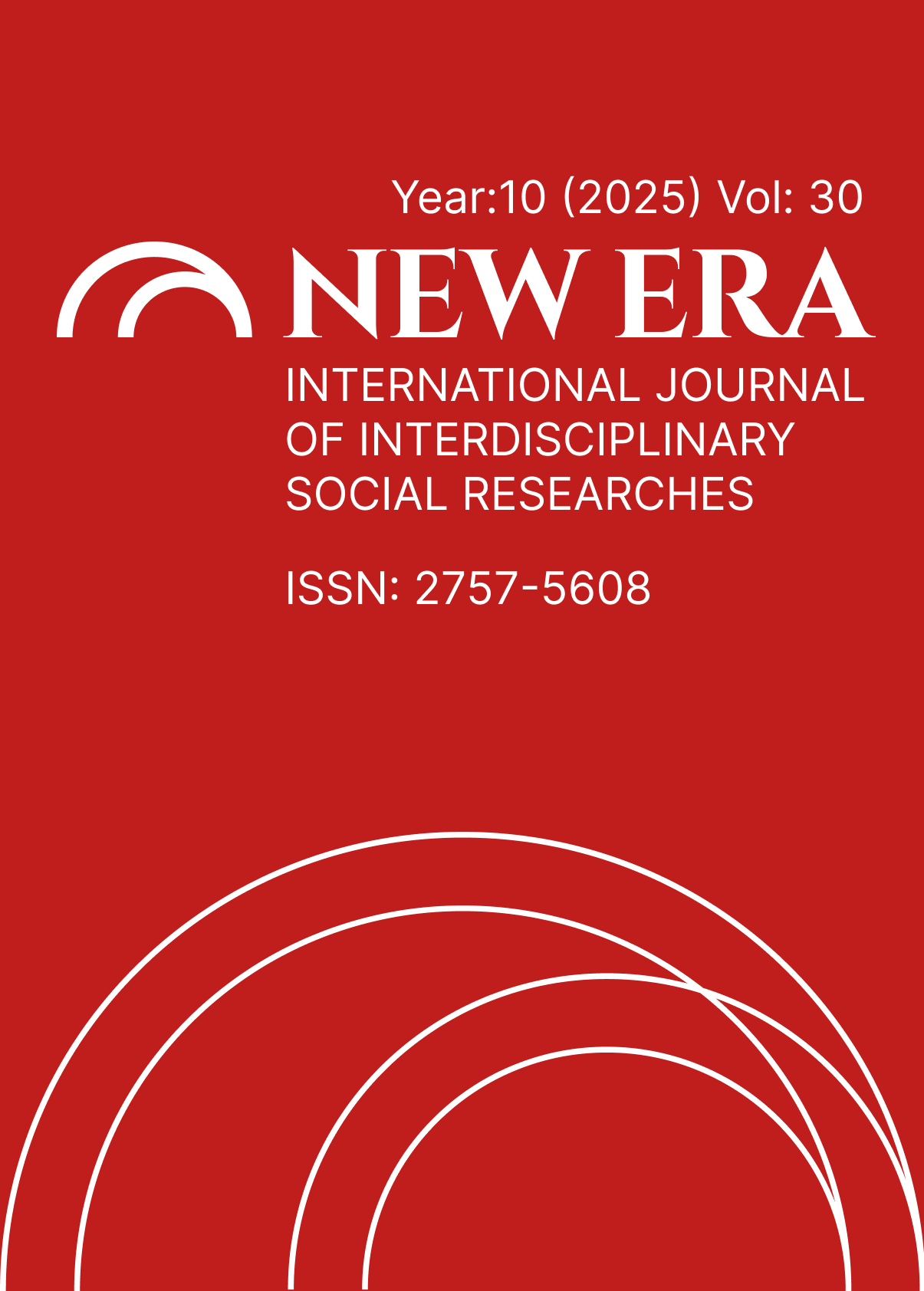A REVIEW OF THE USE OF GENERATIVE ARTIFICIAL INTELLIGENCE IN ONLINE ASSESSMENT PROCESSES
DOI:
https://doi.org/10.5281/zenodo.17391568%20%20Keywords:
Generative Artificial Intelligence, Online Measurement and Assessment, Automatic Assessment, Personalised Feedback, Online Distance Learning, Educational Technologies, Exam SecurityAbstract
With the widespread use of online education environments today, the effectiveness and reliability of assessment processes have become increasingly important. In this context, artificial intelligence (AI) technologies are transforming online assessment processes through various applications such as automatic question generation, response evaluation, personalised feedback, and enhanced exam security. This paper examines the areas of application, advantages, and limitations of AI in online assessment processes. AI-based systems can generate questions in various formats by analysing educational materials, perform automatic evaluation of open-ended responses, and provide personalised feedback to students to help them correct their mistakes. Additionally, they can detect suspicious behaviour during exams to identify cheating attempts, thereby ensuring academic integrity. One of the most important advantages of these technologies is that they save educators time while making the assessment process more objective and reliable. However, there are some limitations, such as the accuracy, impartiality, and ethical issues of the responses generated by AI. In addition, the effectiveness of personalised feedback and the transparency of AI decision-making mechanisms are among the issues that need to be addressed. In conclusion, the opportunities offered by AI in online assessment processes bring about a significant transformation in education. However, interdisciplinary research and more comprehensive studies are needed to ensure that these technologies are used in a more reliable and ethical manner.
References
Arzt, G., Widmer, S., & Dixon, S. (2008). Automatic page turning for musicians via real-time machine listening. In Proceedings of the 18th European Conference on Artificial Intelligence (ECAI 2008) (pp. 241–245).
Bender, E. M., Gebru, T., McMillan-Major, A., & Shmitchell, S. (2021). On the dangers of stochastic parrots: Can language models be too big? In Proceedings of the 2021 ACM Conference on Fairness, Accountability, and Transparency (pp. 610–623). doi:10.1145/3442188.3445922
Bennett, R. E. (2015). The changing nature of educational assessment. Review of Research in Education, 39(1), 370–407. doi:10.3102/0091732X14554179
Biggs, J., & Tang, C. (2007). Teaching for quality learning at university (3rd ed.). McGraw-Hill.
Bommasani, R., Hudson, D. A., Adeli, E., Altman, R., Arora, S., von Arx, S., ... Liang, P. (2021). On the opportunities and risks of foundation models. arXiv preprint arXiv:2108.07258. Retrieved from http://arxiv.org/abs/2108.07258
Brown, T. B., Mann, B., Ryder, N., Subbiah, M., Kaplan, J., Dhariwal, P., ... Amodei, D. (2020). Language models are few-shot learners. Advances in Neural Information Processing Systems, 33, 1877–1901.
Burrell, J. (2016). How the machine ‘thinks’: Understanding opacity in machine learning algorithms. Big Data & Society, 3(1), 1–12. doi:10.1177/2053951715622512
Dhawan, S. (2020). Online learning: A panacea in the time of COVID-19 crisis. Journal of Educational Technology Systems, 49(1), 5–22. doi:10.1177/0047239520934018
Floridi, L., Cowls, J., Beltrametti, M., Chatila, R., Chazerand, P., Dignum, V., ... Vayena, E. (2018). AI4People—An ethical framework for a good AI society: Opportunities, risks, principles, and recommendations. Minds and Machines, 28(4), 689–707. doi:10.1007/s11023-018-9482-5
Gikandi, J. W., Morrow, D., & Davis, N. E. (2011). Online formative assessment in higher education: A review of the literature. Computers & Education, 57(4), 2333–2351. doi:10.1016/j.compedu.2011.06.004
Heffernan, N. T., & Heffernan, C. L. (2014). The ASSISTments ecosystem: Building a platform that brings scientists and teachers together for minimally invasive research on human learning and teaching. International Journal of Artificial Intelligence in Education, 24(4), 470–497. doi:10.1007/s40593-014-0024-x
Holmes, W., Bialik, M., & Fadel, C. (2019). Artificial intelligence in education: Promises and implications for teaching and learning. Center for Curriculum Redesign.
Kellogg, S., Booth, S., & Oliver, K. (2021). A social network perspective on peer supported learning in MOOCs for educators. International Review of Research in Open and Distributed Learning, 22(2), 243–263. doi:10.19173/irrodl.v22i2.5239
Luckin, R., Holmes, W., Griffiths, M., & Forcier, L. B. (2016). Intelligence unleashed: An argument for AI in education. Pearson.
OpenAI. (2023). GPT-4 technical report. arXiv preprint arXiv:2303.08774. Retrieved from http://arxiv.org/abs/2303.08774
Pan, L., Liu, J., & Li, L. (2022). Automatic question generation for educational applications: A systematic review. IEEE Transactions on Learning Technologies, 15(2), 226–244. doi:10.1109/TLT.2022.3157063
Reeves, T. C., & Lin, L. (2020). The research we have is not the research we need. Educational Technology Research and Development, 68(4), 1991–2001. doi:10.1007/s11423-020-09811-3
Selwyn, N. (2016). Education and technology: Key issues and debates (2nd ed.). Bloomsbury Academic.
Selwyn, N. (2019). Should robots replace teachers? AI and the future of education. Polity Press.
Shermis, M. D., & Burstein, J. (Eds.). (2013). Handbook of automated essay evaluation: Current applications and new directions. Routledge.
Williamson, B., & Eynon, R. (2020). Historical threads, missing links, and future directions in AI in education. Learning, Media and Technology, 45(3), 223–235. doi:10.1080/17439884.2020.1798995
Zhai, X., & Kong, X. (2022). A review of artificial intelligence in education from 2010 to 2020. Journal of Educational Computing Research, 60(2), 522–546. doi:10.1177/07356331211055377
Zhou, Y., Huang, C., Hu, Q., Zhu, J., & Tang, Y. (2023). Ensuring academic integrity in online assessments: A blockchain-based approach. Computers & Education, 184, 104516. doi:10.1016/j.compedu.2022.104516
Downloads
Published
How to Cite
Issue
Section
License
Copyright (c) 2025 NEW ERA INTERNATIONAL JOURNAL OF INTERDISCIPLINARY SOCIAL RESEARCHES

This work is licensed under a Creative Commons Attribution-NonCommercial 4.0 International License.


